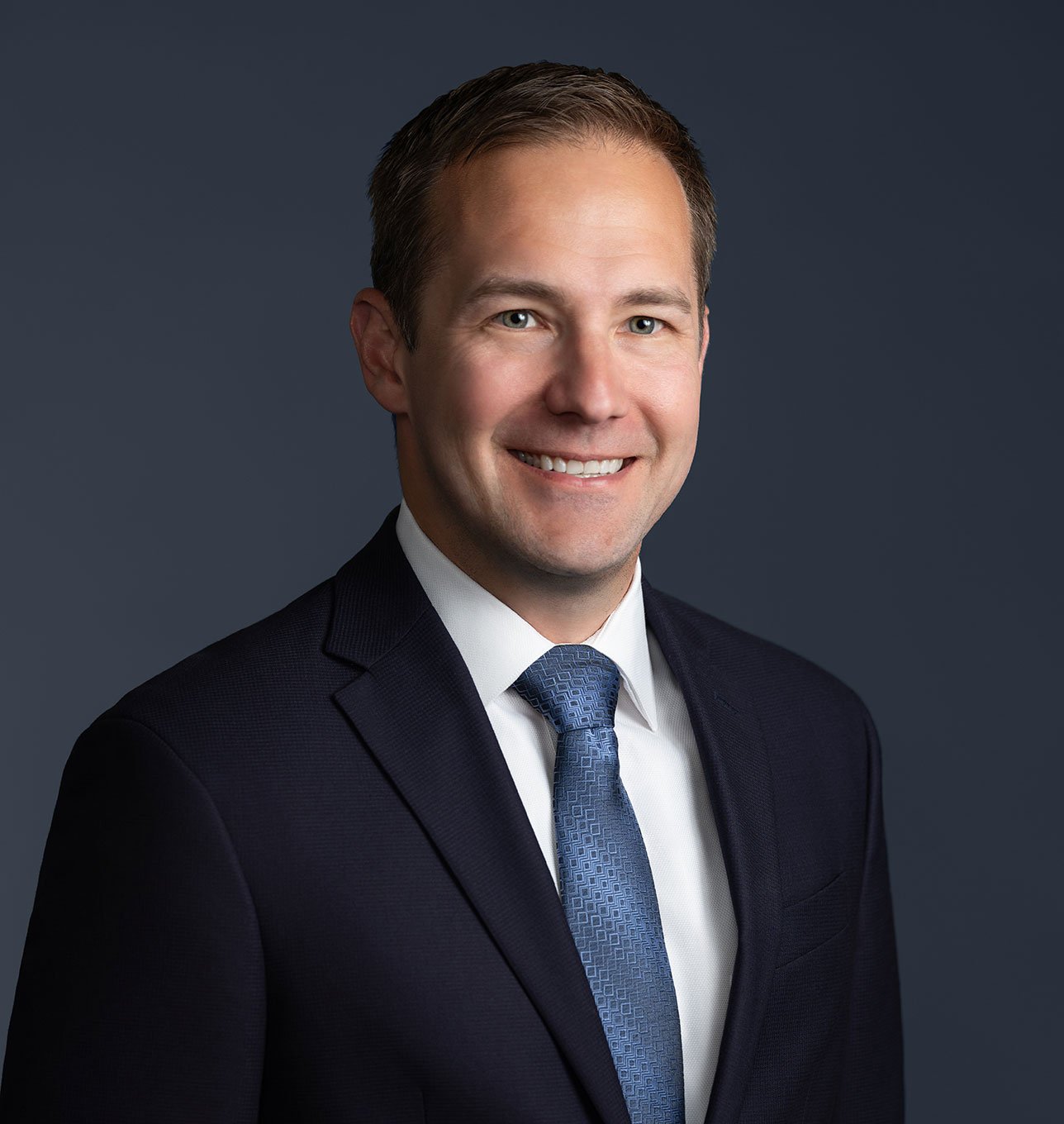US Department of Labor Solicits Feedback and Provides Guidance to Smaller Employers on Pooled Employer Plans
On July 28, 2025, the US Department of Labor (DOL) issued a Request for Information (RFI) regarding the current usage and operations of pooled employer plans (PEPs), as well as obstacles that are discouraging smaller employers from offering their employees retirement benefits through a PEP.
A PEP is a type of retirement plan that enables multiple unrelated employers to participate in a single plan managed by a pooled plan provider. PEPs were established by the Setting Every Community Up for Retirement Enhancement Act of 2019 (SECURE Act), which amended the Employee Retirement Income Security Act of 1974 (ERISA) to allow unrelated employers to participate in a multiple employer plan. Congress intended PEPs to make it easier and more affordable for businesses—particularly smaller ones—to offer retirement benefits to their employees, while limiting the administrative burdens of sponsoring a retirement plan and enabling the participating employers to potentially take advantage of economies of scale, resulting in lower administrative and investment fees. In particular, PEP arrangements can allow employers to transfer most of the fiduciary responsibilities of sponsoring a retirement plan to the pooled plan provider.
Because PEPs are still a relatively new retirement plan arrangement, many smaller employers may not yet be aware of them, let alone understand how ERISA applies to them or how to review and select a potential PEP provider. Accordingly, the DOL stated it was issuing the RFI with the goal of addressing these challenges “which may impede small employers from taking advantage of PEPs.” The DOL also emphasized that, “[i]n addition to promoting retirement savings and reducing participant costs, expanding the use of PEPs is aligned with the Department’s broader economic goals, including improving job quality and increasing labor force participation, especially at small businesses.”
DOL Statistics Regarding the Current Market for PEPs
Based on data from annual 2022 and 2023 Form 5500 filings and pooled plan provider registrations (Form PR), the DOL identified at least 190 PEPs in operation as of December 31, 2023, with approximately 618,000 participants and nearly $5 billion in assets. Interestingly, nearly 70% of all PEP assets were being held by the 12 largest PEPs, based on assets under management, with over 40% of PEP assets held by the four largest PEPs. The largest PEP held $1.68 billion in assets as of December 31, 2023, but served only 63 employers with approximately 56,000 total participants. Meanwhile, the second-largest PEP held $1.08 billion in assets and served 33,773 employers with approximately 538,000 participants.
The DOL also noted that many of the PEPs whose data it reviewed “appeared to be delivering on Congressional intent by offering diversified investment lineups at a lower cost than small plans could likely negotiate on their own behalf.” In particular, the 12 largest PEPs had gathered enough assets to access investment types and low fee share classes that would typically be inaccessible to small plans, and offered investment lineups that “generally covered major asset classes without overwhelming participants by offering overlapping or arcane designated investment alternatives.”
DOL’s Guidance on Choosing a PEP
The DOL explained that it was issuing the RFI to obtain additional information “as part of a process aimed at developing a potential regulatory safe harbor or safe harbors that comprehensively encourage market participants to offer and employers to join [PEPs].” However, while it engages in that process, the DOL included with the RFI nine “tips” designed to “to assist small business owners in picking a PEP.” Those tips are listed and summarized below:
- Consider what a PEP has to offer you and your employees. Employers should explore the advantages of PEPs, including saving the employer the time and expense of the day-to-day management of the plan, while allowing employees to save for retirement.
- Make sure you understand the type of PEP under consideration. Employers should understand how the various forms of PEPs operate and determine which PEP is the most appropriate for them. While some PEPs provide fixed features, others allow for more tailored offerings.
- Make sure you consider the experience and qualifications of the PPP. PEPs must be administered by a pooled plan provider (PPP). Understanding the PPP’s expertise and credentials is an important aspect of choosing a PEP. The DOL suggests asking the PPP certain questions, including about customer satisfaction, prior litigation or governmental enforcement matters, the number of employers and participants in the PEP, and the amount of assets in the PEP.
- Make sure you ask questions about the PEP’s fees. Employers should also ask the PPP about the fees associated with participating in the PEP. The fees may cover various administrative services, recordkeeping, custodial services, and trustee services. Employees should understand the fees and expenses of joining the PEP as well as the fees being paid to the PPP (and the approval process for those fees).
- Make sure you understand the investment options. Employers should make sure they understand the investment options available in the PEP. Employers should ask about the number of investment options, the risks and returns, and the process for selecting and monitoring those investment options, and the qualified default investment alternative (QDIA) for participants who do not direct the investments of their account assets.
- Ask questions about your exposure to fiduciary liability for investments. The DOL explains in the RFI that “employers joining a PEP are legally responsible as fiduciaries for the proper selection of investment options for their employees unless the pooled plan provider hires an investment professional to act as a fiduciary with respect to investment selection.” Because of this, the DOL emphasizes that employers should ask the PPP what fiduciary liability they may have for the PEP’s investment options. Employers should also ask if the PPP hires an outside investment professional who serves as a fiduciary regarding investment selection, and if so, who it is.
- Ask questions about your exposure to fiduciary liability should you join the PEP. Employers should ask if the PEP subscription agreement or other governing documents disclaim any fiduciary responsibilities (including those of the PPP), which would necessarily make those them the responsibility of the employer. “Put differently, you may want to ask whether the PEP’s governing document puts any fiduciary duties on you."
- Don’t forget to monitor your PEP on an ongoing basis. Employers should keep in mind that they are responsible for prudently monitoring the PPP and any other named fiduciaries of the PEP. While employers do not need to supervise the daily activities of the PPP and other named fiduciaries, they should review the PEP’s performance, operations, and fees at a reasonable frequency. This includes a review of the resolution of complaints about the PEP from employees.
- Make sure you fully inquire about the implication of exiting the PEP. Employers should also understand the consequences of exiting the PEP in the event they determine the PEP is no longer the most appropriate way to provide their employees with benefits. In some cases, there may be fees or penalties if an employer ceases participation in the PEP. Employers should also determine if employee accounts will remain in the PEP if the employer stops participating in the PEP.
Other Considerations Regarding PEPs
The DOL’s PEP guidance is intended to encourage employers—especially small employers—to adopt PEPs to reduce investment costs for workers saving for retirement and provide more attractive benefits to potential hires. As the market for PEPs develops, employers may do just that. Already in the few years since PEPs have come onto the market, they have expanded their offerings. For example, some PPPs allow PEP participants to invest in private markets, opening up an investment arena that has typically been restricted to institutional investors and high-net-worth individuals. Available private market asset classes may include private credit, private equity, and real estate, which are generally offered to participants through target date funds or accounts managed by an investment manager.
Employers may also be drawn to the fiduciary protections gained by participating in a PEP. As noted, a participating employer retains fiduciary responsibility for the selection and monitoring of a PPP and any other named fiduciary of the PEP (and may retain additional fiduciary responsibilities such as investment management to the extent not delegated to another fiduciary). But the PPP may expressly assume full responsibility for exercising certain fiduciary functions. To the extent the PPP appoints an ERISA investment manager, then that manager—not the participating employer—is responsible for prudent investment management. As the DOL explains, “[i]n these circumstances, fiduciary liability of participating employers would be minimized because the pooled plan provider assumed full responsibility for selecting and retaining the investment manager.”
Given the proliferation of ERISA class action litigation (which does not seem to be slowing down anytime soon), the ability to offload fiduciary responsibility and thus reduce litigation risk may be a highly attractive proposition to employers. While this consideration may lessen if the current administration is able to enact ERISA litigation reform, the ability to reduce the administrative burdens of sponsoring a retirement plan and the potential economies of scale may continue to make a PEP an attractive option for smaller employers.
DOL’s Requests for Information
As a follow-up to its initial PEP-related Request for Information in June 2020, the DOL is now soliciting additional information “for the purpose of considering whether additional guidance to facilitate small employers joining PEPs would be helpful.” Specifically, because the PEP marketplace has matured over the past five years, and the responses to the initial Request for Information were “varied and inconclusive,” the DOL is seeking additional information responsive to 29 questions, falling into four general categories: (1) general questions; (2) conflicts of interest and mitigation; (3) safe harbor considerations; and (4) questions that will assist the DOL with its required report to Congress. The full list of questions is in the Appendix below.
Responses to the Request for Information are currently due by September 27, 2025 (60 days after the publication of the Request for Information in the Federal Register on July 29, 2025).
Appendix – List of Requests for Information
General Questions
1. The law does not limit the types of entities that may elect to serve as pooled plan providers. Which types of entities (for example, asset managers, third-party administrators, recordkeepers) are acting as pooled plan providers? Are these entities generally contracting out most administrative functions or performing these functions themselves?
2. How are PEPs marketed and distributed and by whom? Do marketing and distribution methods differ depending on the model? Do PEPs compensate third parties to advertise, distribute, promote, or otherwise supply access to and participation in PEPs? If yes, how is such compensation typically determined and from what source(s) is it paid?
3. Do vendors of pooled employer plans (including businesses that are themselves pooled plan providers but that are vending in a non-pooled-plan-provider capacity) also offer model single-employer plans or different PEP options? How do they determine which option to recommend to employers? To what extent and for what reasons do they offer customization and variations, such as different share classes, within the same PEP?
4. What barriers, if any, prevent small employers from becoming aware of, understanding, or trusting PEPs? Have employers with existing plans merged their plans into PEPs? Are there specific challenges associated with doing so that could or should be addressed through guidance or regulatory intervention?
5. In the context of corporate transactions, are there specific challenges for the retirement plans of acquiring businesses to accept acquired businesses’ assets from PEPs (e.g., through plan spin-offs/mergers or through direct rollovers)? What are the challenges associated with preventing leakage when an entity participating in a PEP is acquired?
6. Have professional employer organizations (PEOs) offered PEPs or do they offer only traditional multiple-employer plans? Are there any obstacles or barriers that would prevent a PEO from offering a fully integrated HR platform with a PEP retirement solution?
Conflicts of Interest and Mitigation
7. What percentage of pooled plan providers are using independent 3(38) investment managers pursuant to the delegation permitted by section 3(43)(B)(iii)(II) of ERISA? For this purpose, independent means not affiliated with the pooled plan provider. When 3(38) investment managers are used, are the agreements entered into between the 3(38) investment managers and the pooled plan providers, or do the 3(38) investment managers contract directly with the participating employers?
8. When independent 3(38) investment managers are used for investment and management of assets, how often do the managers provide services to the PEP or pooled plan provider other than investment management services, and what type of other services?
9. Do pooled plan providers purport to limit authority of their 3(38) investment managers to choose the funds or arrangements in which they invest? To what extent do pooled plan providers encourage or require investments from a limited menu of options? To what extent do pooled plan providers purport to limit the range of options to those in which the pooled plan providers have a financial interest?
10. Are PEPs offering investments with revenue sharing arrangements that offset the costs of recordkeeping or other plan services? Are PEPs offering investments that are proprietary to the pooled plan provider, its affiliates, or any other PEP service provider?
11. How do pooled plan providers manage potential conflicts of interest in cases in which they offer investments in which they have a financial interest?
12. Are there any potential conflicts of interest in PEP distribution models? If so, how are they managed?
13. What existing prohibited transaction exemptions (statutory or administrative) do pooled plan providers rely on, if any?
14. Based on the business models that pooled plan providers have developed, is there a need for additional prohibited transaction exemptions? If so, explain why they are needed, what conditions should be included, and why they would be in the interest of, and protective of, affected plans.
Safe Harbor Considerations
15. Should the Department codify a regulatory safe harbor based on the guidance and tips in Sections IV and V of this RFI, respectively, for small employers to satisfy their fiduciary responsibilities for selection and monitoring pooled plan providers and other named fiduciaries referenced in section 3(43)(B)(iii)(I) and their fiduciary responsibilities for the investment and management of the portion of the PEP’s assets attributable to their employees referenced in section 3(43)(B)(iii)(II)? Why or why not? Are there additional considerations or conditions, apart from the guidance and tips in Sections IV and V, that the Department should consider with respect to the design or adoption of such a safe harbor?
16. Would the safe harbor referenced in question 15 encourage the growth of high quality PEPs? Would such a safe harbor help pooled plan providers market PEPs to participating employers while simultaneously encouraging small businesses to join PEPs?
17. Should the safe harbor referenced in question 15 require the PEP to use a 3(38) investment manager that is not affiliated with the pooled plan provider?
18. What disclosures should be provided to participating employers as part of such a safe harbor? Have employers experienced difficulties in obtaining information about PEPs before joining and, if so, what types of information?
19. Should arrangements between an independent 3(38) investment manager and participating employers be permitted, encouraged, or discouraged as part of the safe harbor referenced in question 15—for instance, should the safe harbor encourage or discourage arrangements under which each participating employer in a PEP has a different investment menu for its own employees, or create special protective conditions for such arrangements? Should the safe harbor include conditions designed to ensure that the PPP gives all participating employers and plan participants the same investment options and fee structures on the same terms? Why or why not?
20. Should such a safe harbor exclude PEPs that offer investments in which the pooled plan provider has a financial interest?
21. Should such a safe harbor create any specific requirements regarding the offer of TDFs, the offer of managed accounts, the acceptable number of pooled investments offered as designated investment alternatives, or the asset class coverage of designated investment alternatives available to participating employers in a PEP?
22. Should such a safe harbor designate a permissible range of total fees for participants in the PEP? For this purpose, the safe harbor could define total fees as an average percent of assets.
23. Are there any issues specific to registered investment company funds or collective investment trusts that such a safe harbor should address? If so, what are they and why are they relevant for the safe harbor?
24. Should such a safe harbor require the use of written representations or certifications by the pooled plan provider about the PEP and the pooled plan provider’s diligence in meeting the requirements of ERISA. Could any such written representations help participating employers satisfy their duty to prudently monitor the pooled plan provider, working similar to the way the written representations work in the fiduciary safe harbor in section 408(e) of ERISA (safe harbor for annuity selection)?
25. In addition to the safe harbor referenced in questions 15 through 24 for participating employers, do market participants see a need for a safe harbor for pooled plan providers themselves to encourage the formation of high-quality PEPs? If so, which service provider relationships (e.g., recordkeepers, consultants, trustees, investment managers) and which PEP model (e.g., bundled or unbundled) are most in need of a safe harbor or safe harbors? What should such a safe harbor include?
Report to Congress
26. What information can commenters provide on the range of investment options provided in PEPs, both in terms of the number and type of investments? The “range of investment options” means the specific investment options the responsible plan fiduciary has selected as “designated investment alternatives” under the PEP, without regard to the amount of assets invested in each. This excludes investments available through a brokerage window or similar arrangement.
27. What types of fees are assessed in PEPs and what is the range of the amount of such fees?
28. How do employers select a PEP? Do they tend to use third parties to assist in the selection process? How do employers monitor PEPs? Specifically, which aspects of PEPs are periodically reviewed? How often do employers conduct reviews of the PEPs they have joined?
29. What disclosures are provided to participants in PEPs? Are they generally the same disclosures that are required to be disclosed under ERISA to participants in other defined contribution plans? Responses to the August 2023 RFI stated that disclosures to PEP participants should not be any different than disclosures in other defined contribution plans. Do those responses represent the current view of the public?





